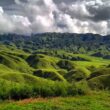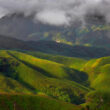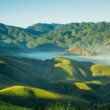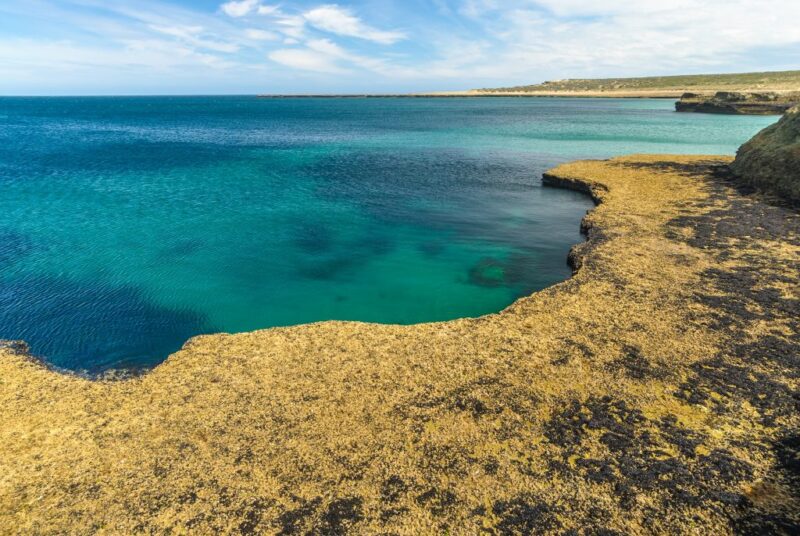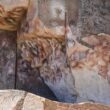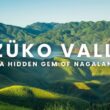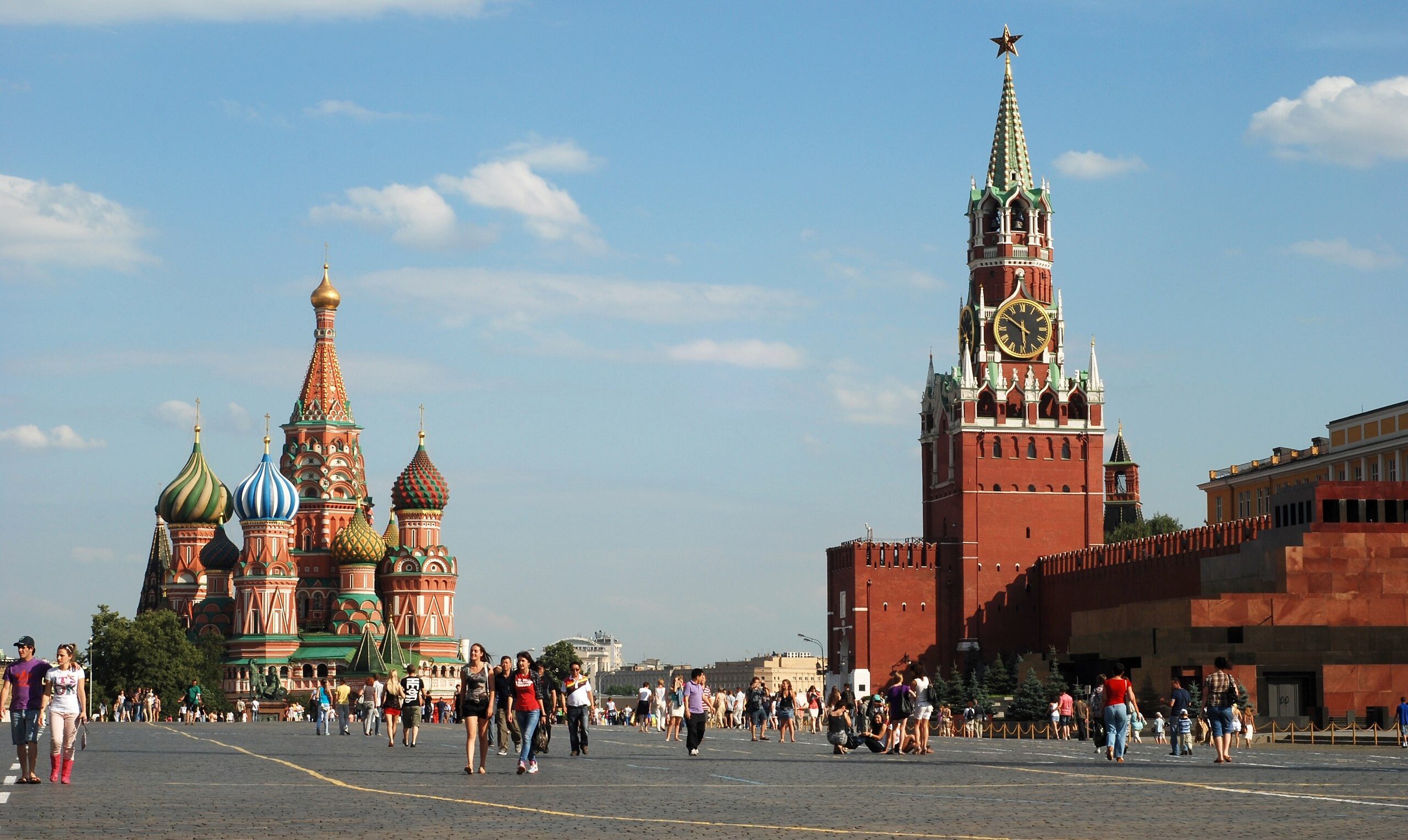Located along Argentina’s Atlantic coast in northern Patagonia, Península Valdés is one of the most biologically rich and unique natural reserves in the Southern Hemisphere. Recognized as a UNESCO World Heritage Site since 1999, this peninsula is famed for its incredible marine wildlife, especially the southern right whales, Magellanic penguins, sea lions, elephant seals, and even orca whales.
Whether you’re a wildlife enthusiast, nature photographer, or traveler looking for off-the-beaten-path adventures, Península Valdés offers a once-in-a-lifetime opportunity to witness raw, untamed nature up close.
Where is Península Valdés Located?
- Province: Chubut, Argentina
- Region: Patagonia
- Nearest city: Puerto Madryn (gateway to the peninsula)
- UNESCO Status: Natural World Heritage Site (since 1999)
Covering more than 3,600 square kilometers, Península Valdés juts into the Atlantic Ocean and is connected to the mainland by the narrow Isthmus of Ameghino.
Wildlife Highlights of Península Valdés
🐋 Southern Right Whales (June–December)
- Watch from Puerto Pirámides, the only town on the peninsula.
- Best time: September to November for whale calves breaching near the boats.
- Boat tours are eco-certified and respectful of the whales’ habitat.
🦭 Elephant Seals & Sea Lions
- Found on beaches like Caleta Valdés and Punta Delgada.
- Mating season: November
- Pupping season: December
🐧 Magellanic Penguins
- Visit Punta Cantor and Caleta Valdés colonies.
- Nesting season begins in September, chicks hatch around November.
🐬 Orcas (March–April)
- The rare sight of orcas intentionally beaching themselves to catch sea lions is unique to this region.
🦅 Land Wildlife
- Spot guanacos, Patagonian foxes, maras, armadillos, and numerous bird species on land.
Top Attractions in Península Valdés
1. Puerto Pirámides
The only town on the peninsula and the base for whale watching tours. Offers accommodations, restaurants, and diving opportunities.
2. Punta Norte
Best known for orca sightings in March and April. Also home to large colonies of sea lions.
3. Caleta Valdés
A scenic beach home to elephant seals and penguins. Features interpretive centers and hiking trails.
4. Punta Delgada
A great viewpoint for watching elephant seals and enjoying cliffs and ocean vistas.
5. Istmo Ameghino Interpretation Center
Located at the entrance of the peninsula — this is a must-stop for understanding the ecology and geology of the region.
How to Get to Península Valdés
✈️ By Air:
- Fly into El Tehuelche Airport in Puerto Madryn (PMY) or Trelew Airport (REL).
- Direct flights available from Buenos Aires (2 hours).
🚗 By Road:
- Puerto Madryn is the primary launch point.
- Tours or rental cars are available to explore the peninsula’s gravel roads.
Best Time to Visit Península Valdés
| Month | Highlights |
|---|---|
| June–Dec | Whale watching |
| Sept–Nov | Penguin nesting & whale calves |
| Mar–Apr | Orca hunting behavior at Punta Norte |
| Year-round | Land wildlife like guanacos, foxes |
Each season offers a different spectacle, making Península Valdés an all-year-round destination for wildlife tourism.
Where to Stay
- Puerto Pirámides: Closest option with boutique hotels, hostels, and eco-lodges.
- Puerto Madryn: Larger town with more amenities and tour operators.
- Estancias (rural ranches): Unique stays inside the peninsula for an immersive experience.
Eco-tourism and Conservation
Península Valdés is a protected nature reserve. Strict rules are in place to ensure that tourism does not disturb the fragile ecosystem:
- Only certified guides can conduct whale tours.
- Speed limits and restrictions are enforced on gravel roads.
- Designated viewing areas for wildlife.
Travelers are encouraged to respect wildlife boundaries, avoid littering, and support local conservation efforts.
Read about all the World Heritage Sites
Frequently Asked Questions (FAQs)
1. What makes Península Valdés a UNESCO World Heritage Site?
Its exceptional biodiversity, including important breeding grounds for endangered species like the southern right whale, earned it UNESCO status in 1999.
2. When is the best time to see whales in Península Valdés?
From June to December, with peak sightings between September and November.
3. Can I see orcas at Península Valdés?
Yes, usually between March and April at Punta Norte, when they perform unique hunting behaviors.
4. Is Península Valdés safe for travel?
Yes, it’s considered very safe. Roads can be rough, so it’s recommended to use a 4×4 vehicle or join a guided tour.
5. Are there guided tours available?
Yes, plenty of eco-certified tours depart from Puerto Madryn and Puerto Pirámides.
6. Can I stay overnight inside the peninsula?
Yes, in Puerto Pirámides or on local estancias (ranches).
7. What is the road condition like inside the peninsula?
Most are unpaved gravel roads — drive carefully and watch for wildlife.
8. Are there entrance fees?
Yes, there’s an entrance fee to the protected area (~$10–15 USD for foreign visitors).
9. Is it family-friendly?
Absolutely! Kids love seeing whales, penguins, and seals up close.
10. How long should I spend in Península Valdés?
At least 2–3 days to fully explore the main attractions and enjoy wildlife watching at different times.
Final Thoughts: A Wildlife Wonderland Worth the Journey
Península Valdés is one of South America’s greatest natural treasures. It’s a place where humans are only guests in a world ruled by whales, seals, penguins, and orcas. This UNESCO-listed gem offers rare wildlife encounters, breathtaking landscapes, and the kind of travel experience that sticks with you forever.
Whether you’re photographing whales from a boat or quietly watching penguins waddle to their nests, Península Valdés is a reminder of the delicate beauty of our planet — and why it’s worth protecting.

